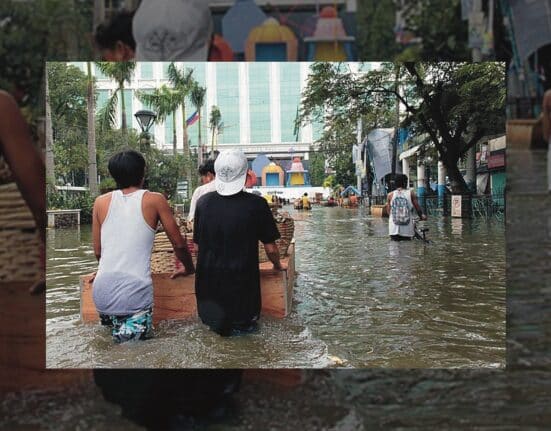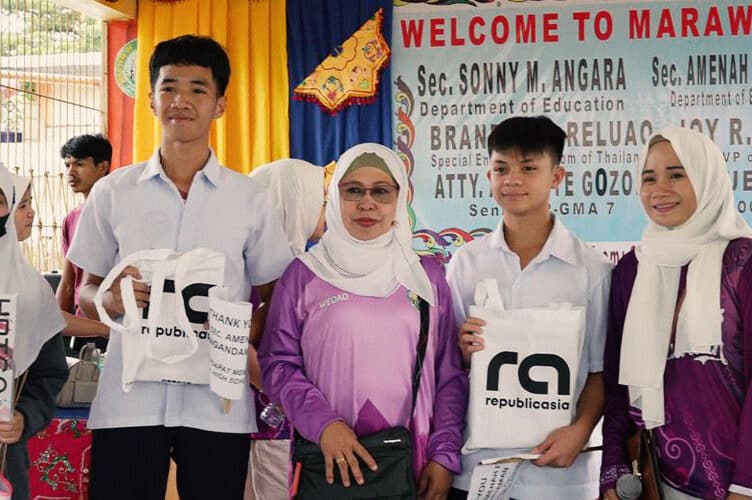RAINY days mean a break from the harsh heat of the Philippine weather with the cold allowing you to curl up in your bed under your covers.
Cuddle weather is what it’s commonly referred to on the internet.
According to the Urban Dictionary, cuddle weather means it’s getting cold or rainy outside. The perfect weather for getting under a blanket with someone and snuggling up.
For some, this means being waist-deep in your comfortable linen covers and having the comfort of a roof over your head.
But for the majority of the people in the Philippines, it means being waist-deep in flood in your own home.
That is the situation that 20-year-old Julian Clyde Quiben faced, waking up to a flooded first floor amidst typhoon Carina.
A resident of Balut, Tondo in Manila, Julian is one of the many citizens in the area who encountered flooding in their homes brought on by the nonstop heavy rain.
Unfortunately, his family was unprepared and did not expect the overflow of sewage and rainwater, “This type of event does not happen too often in our area.”
The last time there was flooding in their community was back in 2013 with typhoon Yolanda which resulted in the knee-deep level of flooding.
During that morning, their furniture and appliances were brought up their stairs to avoid being destroyed in the flood. In an interview with Republicasia, Julian shares that their family struggled to purchase food without submerging themselves in the dirty rainwater; there is also the restriction of using their comfort rooms as it was also swamped.
In the question if LGUs have projects or contingency plans in case of flooding for their area, “I’m not well informed about their contingency plans, but the fact that no one reached out to us, answered the question itself,” Julian answers.
The reality of the rainy season in the country is that flooding is common even with normal rainy days. Hence, at heavy downpours, those at risk are communities in locations that are prone to flood.
However, even large cities like Makati are not free from surges.
Sobrang lala, stay home na lang today guys. The non-stop rain flooded the streets even in Makati. pic.twitter.com/8J32ICvfjW
— joven (@joven) July 23, 2024
A netizen on X with the handle @Chris_Derrick28 shares: “Parang di na cuddle weather ‘to ah, parang kailangan na namin lumikas…”
Attached to their tweet, photos and videos of flooding in their home in Malabon can be seen.
Being safe in their own homes, people often forget that the underprivileged are the most vulnerable in experiencing the result of calamities.
Cuddle weather is for the privileged
“Sobrang laking privilege to not worry about baha in this godforsaken country,” @jstranzhur posted on X.
The reality of the current weather is far from comfort and snuggling up in bed.
Most citizens are having to evacuate from their homes as waters in various locations continue to rise due to nonstop rain.
As of July 24, rescue operations were done in Damka, Sta. Mesa, Manila as floods have reached at least seven feet in the community, reported in Manila Disaster Risk Reduction and Management (DRRM) Office’s official Facebook account.
Animals are also being rescued in their operation.
While some offices suspended work due to the heavy storm, the average working Filipino surges through high waters for food deliveries during the ongoing storm.
In a Facebook post from ABS-CBN, a video shows a delivery rider braces knee-deep flood to deliver a customer’s food order at barangay Amihan in Quezon City on Wednesday amidst the heavy rain.
These are only a few of the realities that the common Filipino citizen endures in crises like typhoons.
Filipino resiliency: A band-aid solution
During times of need, as opposed to being presented with actual solutions, what is commonly highlighted as the silver lining of Philippine citizens experiencing calamities is their resilience to persevere even after a tragic loss.
In Balut, Tondo, Julian states that only the residents in their neighborhood are the ones who aided each other during the flood.
“Filipinos did not become resilient by choice, we were forced to be. These tragedies happen because of the poor infrastructure and planning resulting in poor living conditions that are not being monitored well and being ignored by the higher-ups.” He adds.
Help goes beyond their neighborhood too with his internship company actively searching for donations to assist other communities in crises.
Typhoon Carina will not be the last typhoon that will flood the Philippines. It will be one of many natural calamities that Filipino citizens face.
Until there are no clear plans for projects, contingency plans, and aid for the vulnerable sector during tragedies like this, it will, unfortunately, be a continuous cycle for the Filipino people while the privileged stay in the comfort of their homes and enjoy the “cuddle weather”.
It was announced that the entire Metro Manila had been placed in a state of calamity on July 24, reported by Rappler.
In the same article, the cities of Manila, Marikina, Quezon City, Valenzuela, Malabon, and Navotas are some of the most affected cities of the southwest monsoon enhanced by Typhoon Carina.
With reports from Catherine Jules C. Juvida
How useful was this post?
Click on a star to rate it!
Average rating 0 / 5. Vote count: 0
No votes so far! Be the first to rate this post.
We are sorry that this post was not useful for you!
Let us improve this post!
Tell us how we can improve this post?







